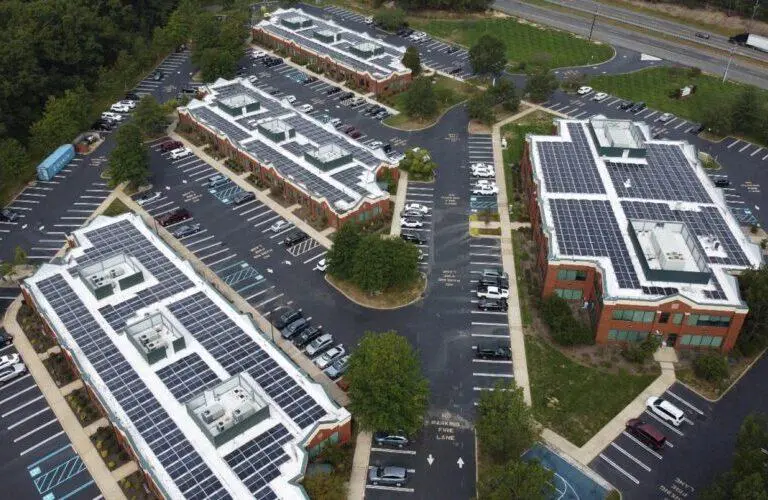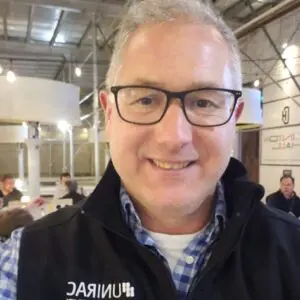Solar Spotlight: Supporting the structural side of commercial solar.
- By Billy Ludt | March 3, 2023

SHARE THIS:
A few years on, there is still uncertainty surrounding the solar supply chain. There are likely still modules tied up at shipping ports, and despite Inflation Reduction Act incentives to develop a larger domestic market for solar panels, it will still be some time before we experience it. That is not necessarily the case for solar racking and mounts. Unirac, a manufacturer with more than 20 years in the solar structures space, is geared and ready to tackle commercial solar projects in 2023. We’re joined by Unirac’s commercial business development director, Ted Bleecker, and director of customer solutions, Brandon Carrasco, to discuss what’s ahead for the company in the coming year.
Below is a portion of Unirac’s Solar Spotlight podcast with Solar Power World, but be sure to listen to the full episode here or on your favorite podcast app.
Contractor’s Corner by Solar Power World · Solar Spotlight: Supporting the structural side of commercial solar
With the passage of the inflation Reduction Act, what changes does Unirac See in the market with materials and how are you supporting the industry?

BC: I think, as we as we’ve seen this IRA legislation, we’re excited about it. First of all, there is a lot of tailwinds for the industry. That means nothing but good things for us across the board, as well as our partners, our customers and just the environment in general. But what we’re doing is we have a diverse supply chain. So as our customers continue to look for the options to how can they be compliant, the big question for us as a manufacturer is, can we meet the U.S. material requirements? So that doesn’t necessarily apply to everybody in every project. However, with our diverse supply chain, we do have a broad base of U.S. supply and material and manufacturing. And that allows us to meet in basically every segment –– residential, flat roof and ground –– that we work in. It allows us to provide materials and to provide projects or products for projects that meet those requirements of being U.S. manufactured.
What structural changes do you see in the C&I market?
TB: I think the developers are more active in the engineering, procurement and construction of their portfolios. So, we’re seeing a much more active role in the market with development partners. EPCs are getting smarter. I think back 10 years ago, it was a little “cowboy” how projects were installed on rooftops. Today, we’re very granular in our approach, with point loads with dead loads with applied loads. There’s a whole number of factors that affect the building envelope, and particularly the roof structure. So, it’s exciting to be part of a great company like Unirac, that has an engineering team that has a back office in India that supports us. We’re a 24/7 operation now.
How have large format modules affected racking engineering and designs?
BC: I think the first thing is as modules have continued to increase, it requires racking manufacturers to adapt. We and others in the industry have had to make modifications to some of the long goods in let’s say a ballast system where wind deflectors and ballast trays just have to grow to meet the new size ranges of some of the modules that are out there. It also has implications on wind tunnel testing, where the model that may have been tested six, seven, eight years ago is no longer valid for the size of models. They’ve just outgrew the range of that valid model. So, for Unirac what that’s meant is some new SKUs, some new components to ensure that we can handle those larger format modules, additional testing, as well as a refresh of some of the wind tunnel testing that we’ve done.
How does Unirac differentiate itself from other racking companies?

TB: Unirac’s investment in human capital is unequaled in the industry. We’re constantly looking to create the best employee base to provide the best customer experience. That’s our goal. We are not thin on human representation and support for our customer base, from engineering to product support to install support, we’re there throughout. And then secondly, our product development. If you look at all our competitors, nobody is innovating at the pace that Unirac is and that goes from our residential attachments, like our butyl attachments for shingle roofs to metal roofs to multiple flat roof solutions. We’re looking at bifacial gains currently with our RM10 system and RM10 Evo and we’re innovating with UL 3741 testing across every rack that we have on the market.
What piece of advice would you offer to companies looking to break into the C&I, EPC or developer market?
TB: Right, it’s easy, partner with Unirac. We’ve got the best team on the market to support you, and I say that slightly in jest, but with all seriousness, we have the ability to support you from early-stage production reports up to very intense, permit design-ready documentation. We have the full spectrum of product offering to provide support for your installs wherever it is, we’ve got the onsite support for you to install in any market across the country.
BC: That partnership is so important, especially if somebody’s stepping into the C&I space.
